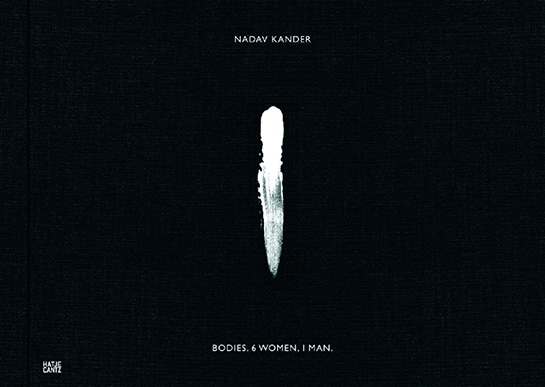Review: Bodies: 6 Women, 1 Man by Nadav Kander

“More film has probably been exposed on naked and semi-naked women than on any other subject in photography’s history.” write Gerry Badger and Martin Parr in The Photobook: A History, Vol. 1 (p. 226). As a matter of fact, there is a whole meta-book dedicated specifically to such photobooks, Alessandro Bertolotti’s Books of Nudes, which offers a very unique and interesting view of not just photography of the nude itself, but also - and especially - the societies it is embedded in (allowing the reader to, for example, connect the mass movements around public nudity prevalent in 1920s Germany with, say, Leni Riefenstahl’s imagery of Olympic athletes - and much more). Nadav Kander’s Bodies: 6 Women, 1 Man probably is not the latest addition to this type of photobook (there must be countless appearing every week), but a very recent one.
As the title indicates, Kander worked with seven model, six of them women, plus one man. They each were photographed more or less isolated against a mostly black background (there are a few photographs using a white one, and one set features a few lines in the background that are used to roughly delineate a space). They all also appear to be using body makeup - some more than others, which has the effect of isolating their bodies and poses even further.
The resulting photographs clearly reference not just the history of photography - in various cases, Irving Penn’s Nudes come to mind, as do some of Ryan McGinley’s b/w studio nudes. There also is the history of the art nude in general, with possibly British painters such as Lucian Freud or Francis Bacon providing other reference points. Art is never made in perfect isolation.
In an interview at the end of the book, Kander speaks of photographic nudes he aspires to: “Kertesz, Muybridge, Friedlander, the most honest nudes I have ever seen, and Brandt,” noting he likes them for their lack of eroticism. Why or how eroticism would result in something possibly less honest or in something that was less preferable I don’t know. I remember Thomas Ruff speaking about pornographic images found online as the most honest (and most democratic) nudes, and that way we would would have two very different approaches to the same subject matter.
I feel that Kander has maybe taken the effect a little bit too far. These are isolated bodies, photographed very beautifully, yet maybe too beautifully in an aesthetic sense. In much the same way, the presentation in the book itself is slightly too careful - there is an almost blank spread in between each of the spreads showing a photograph (or occasionally two). Many of the images already carry considerable weight, and the presentation adds to that.
It’s almost as if the viewer is not supposed to enjoy the photographs of naked bodies in the wrong way, whatever that might be, eroticism possibly being the main “danger”. The nude body per se is not erotic, however and photographs of it aren’t either. And even if they were for some, well… wouldn’t that be just fine?
That said, Nadav Kander is to be applauded for going where many have gone before: What other type of photography would be harder to do than the one covered by so many photographers before, a type of photography that is also one of the most democratic one (without being fully acknowledged as that)? There are many wonderful photographs in this book of nudes, executed and seen perfectly, bringing the artist’s sensibilities to this type of photography.
Bodies: 6 Women, 1 Man; photographs by Nadav Kander; conversation with the artist by Peter Aspden and Charles Pickstone; 135 pages; Hatje Cantz; 2013